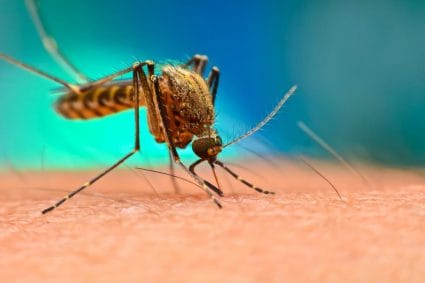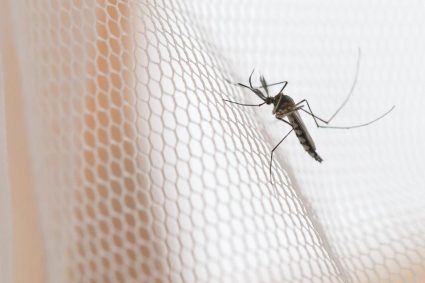
Skunks, renowned for their foul-smelling spray, can be a real nuisance. Removing the scent glands is a commonly considered solution, but it comes with certain ethical and legal implications. This comprehensive guide will provide you with the necessary information about skunk scent glands, their removal procedure, and associated risks.
Removing skunk scent glands involves a surgical procedure where the glands, located on either side of the skunk’s anus, are carefully excised. Protective gear, a scalpel, tweezers, disinfectant, and a skunk odor remover are required tools for this process. However, it’s important to note that this procedure should only be performed by a trained professional due to inherent surgical risks and ethical concerns. Additionally, legal restrictions may apply in certain regions.
What are Skunk Scent Glands?
Skunk scent glands are highly modified, enlarged, apocrine sweat glands. They are located inside the rectum at the base of the tail. All carnivores have anal scent glands, but they are extremely well-developed in skunks. Skunks have two glands, one on each side of the anus, which produce the skunk’s spray, a mixture of sulfur-containing chemicals such as thiols that have an offensive odor. Each gland has a nipple associated with it, and skunks can aim the spray with highly coordinated muscle control.
Function of Skunk Scent Glands
The primary function of skunk scent glands is to produce and store a potent, foul-smelling liquid that skunks use as a defense mechanism against potential threats or predators. The active ingredient in the nauseating musk is the sulfurous compound butyl mercaptan. When a skunk feels threatened, it will go through a series of threat behaviors before spraying, such as stamping its front paws, charging forward, or performing a handstand. The spray is emitted as an atomized cloud that the pursuer must run through, which is usually enough to deter most predators.
Risks and Dangers Associated with Skunk Scent Gland Removal
Removing skunk scent glands comes with several risks and dangers:
- Loss of defense mechanism: Skunks who lose their scent glands are at a disadvantage if they ever escape or are released back into the wild, as they lose their primary defense mechanism.
- Ethical concerns: The removal of scent glands is viewed as cruel by some, as it takes away the skunk’s natural ability to protect itself.
- Surgical risks: Infection, bleeding, or complications from anesthesia are inherent risks in any surgical procedure.
- Legal restrictions: In some regions, such as the UK, the removal of skunk scent glands has been deemed illegal since 2006.
- Increased vulnerability: De-scented skunks are more susceptible to becoming roadkill or falling prey to predators due to their nearsightedness and lack of a homing instinct.
Required Equipment for Skunk Scent Gland Removal
If you decide to remove a skunk’s scent glands, you’ll need the following:
- Protective gloves
- Scalpel or sharp knife
- Tweezers or forceps
- Disinfectant
- Skunk odor remover
Remember, this procedure should only be performed by a trained professional, such as a veterinarian or wildlife expert.
Step-by-Step Procedure for Skunk Scent Gland Removal
Here’s a step-by-step guide on how to safely remove skunk scent glands:
- Wear protective gear: Put on gloves, old clothes, and eye protection to avoid contact with the skunk’s spray and any potential diseases the animal may carry.
- Secure the skunk: Gently restrain the skunk to prevent it from moving or escaping during the procedure.
- Locate the scent glands: Skunk scent glands are located on either side of the anus, beneath the skin. They are small, oval-shaped, and filled with a yellowish, oily liquid.
- Make an incision: Using a sharp, sterile scalpel, make a small incision in the skin directly above each scent gland.
- Remove the glands: Using a pair of forceps or tweezers, gently grasp the gland and carefully pull it out of the incision.
- Close the incisions: After both glands have been removed, close the incisions using sutures or surgical glue.
- Clean the area: Clean the surgical area with a mild antiseptic solution.
- Monitor the skunk: Keep an eye on the skunk for any signs of infection, pain, or discomfort.
Legal and Ethical Considerations
Before considering the removal of skunk scent glands, it is essential to understand the legal and ethical implications. It is crucial to prioritize the well-being of the animal and comply with local laws and regulations.
Removing Skunk Smell from Clothes and Pets
If you or your pet has been sprayed by a skunk, you can use a mixture of 1 quart of 3% hydrogen peroxide, 1/4 cup of baking soda, and 1-2 teaspoons of dish soap. Apply the mixture to your pet’s coat, avoiding their eyes and mouth, and let it sit for 5-10 minutes before rinsing thoroughly with water. Repeat as needed.
In conclusion, while removing a skunk’s scent glands may seem like a quick fix, it is essential to consider the ethical implications and potential risks associated with the procedure. It is always best to consult with a professional before taking any drastic measures.
Frequently Asked Questions
What is the lifespan of a skunk?
The average lifespan of a wild skunk is about 2-3 years, while domesticated skunks can live up to 10 years with proper care.
Can skunks spray after their scent glands have been removed?
No, once the scent glands are removed, skunks lose their ability to spray.
How far can a skunk spray?
Skunks can spray their defensive musk up to a distance of 10 feet.
How long does it take for a skunk’s scent glands to refill after spraying?
It takes a skunk about 10 days to refill its scent glands after spraying.
Is it possible for a skunk to spray humans?
Yes, skunks can and will spray humans if they feel threatened. It’s always best to give skunks their space to avoid being sprayed.
Why do skunks stomp their feet before spraying?
Skunks stomp their feet as a warning signal before they spray. This behavior is meant to scare off potential threats without having to use their valuable musk.
Can skunks be kept as pets?
Yes, skunks can be kept as pets in some regions, but it’s important to check local laws and regulations as it is illegal in some places. Also, skunks require a lot of care and attention, so they’re not suitable for everyone.











